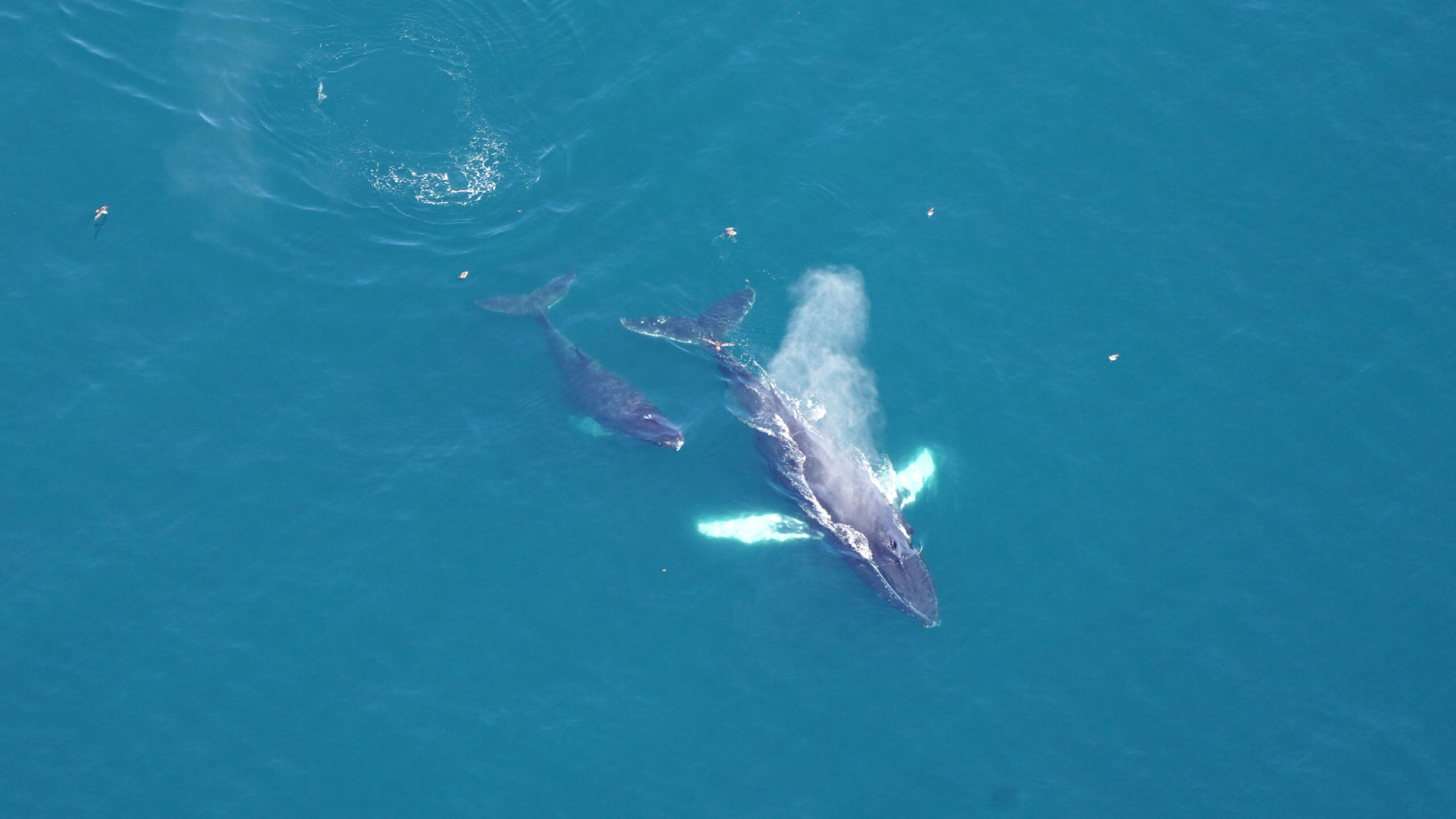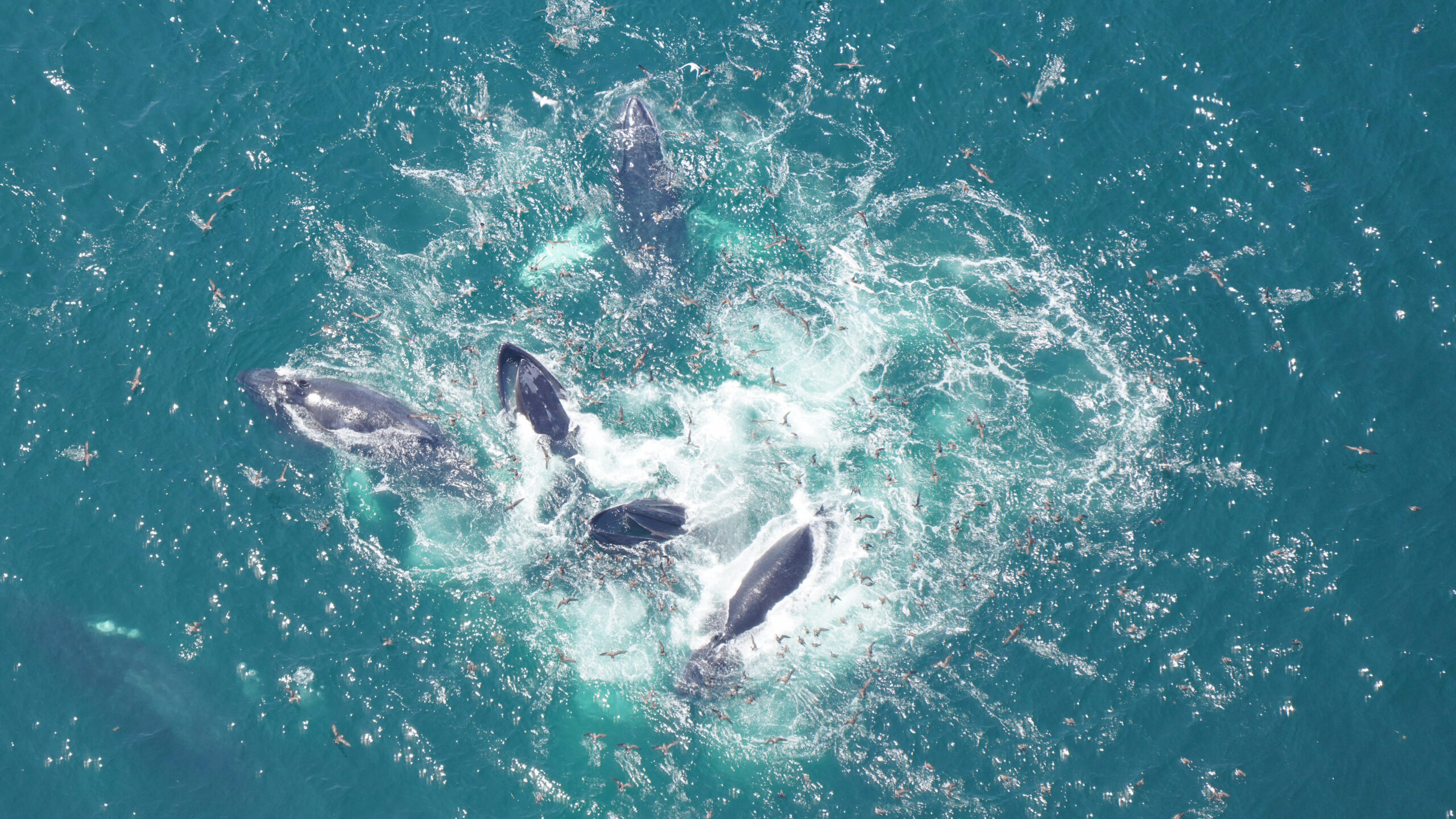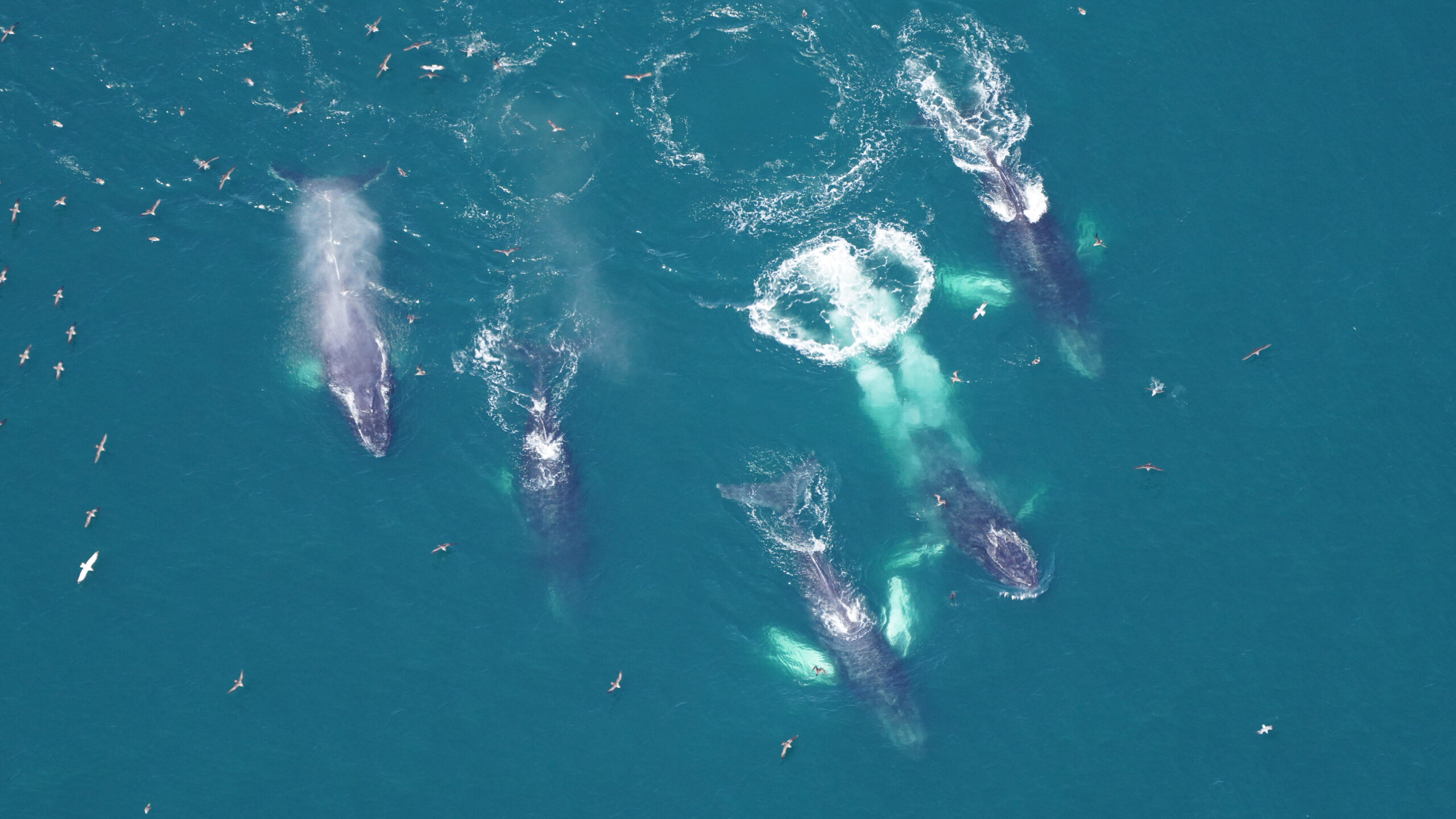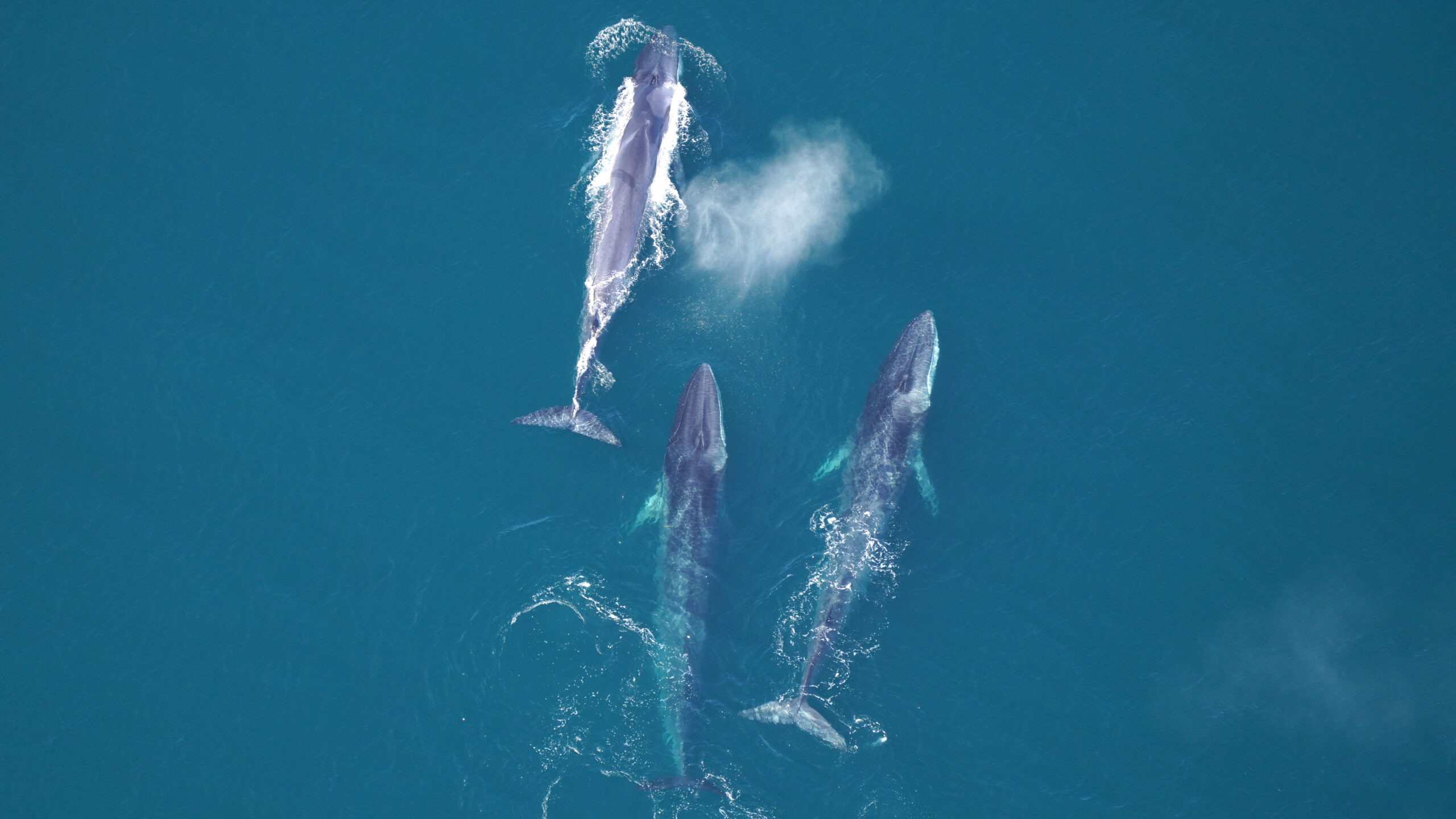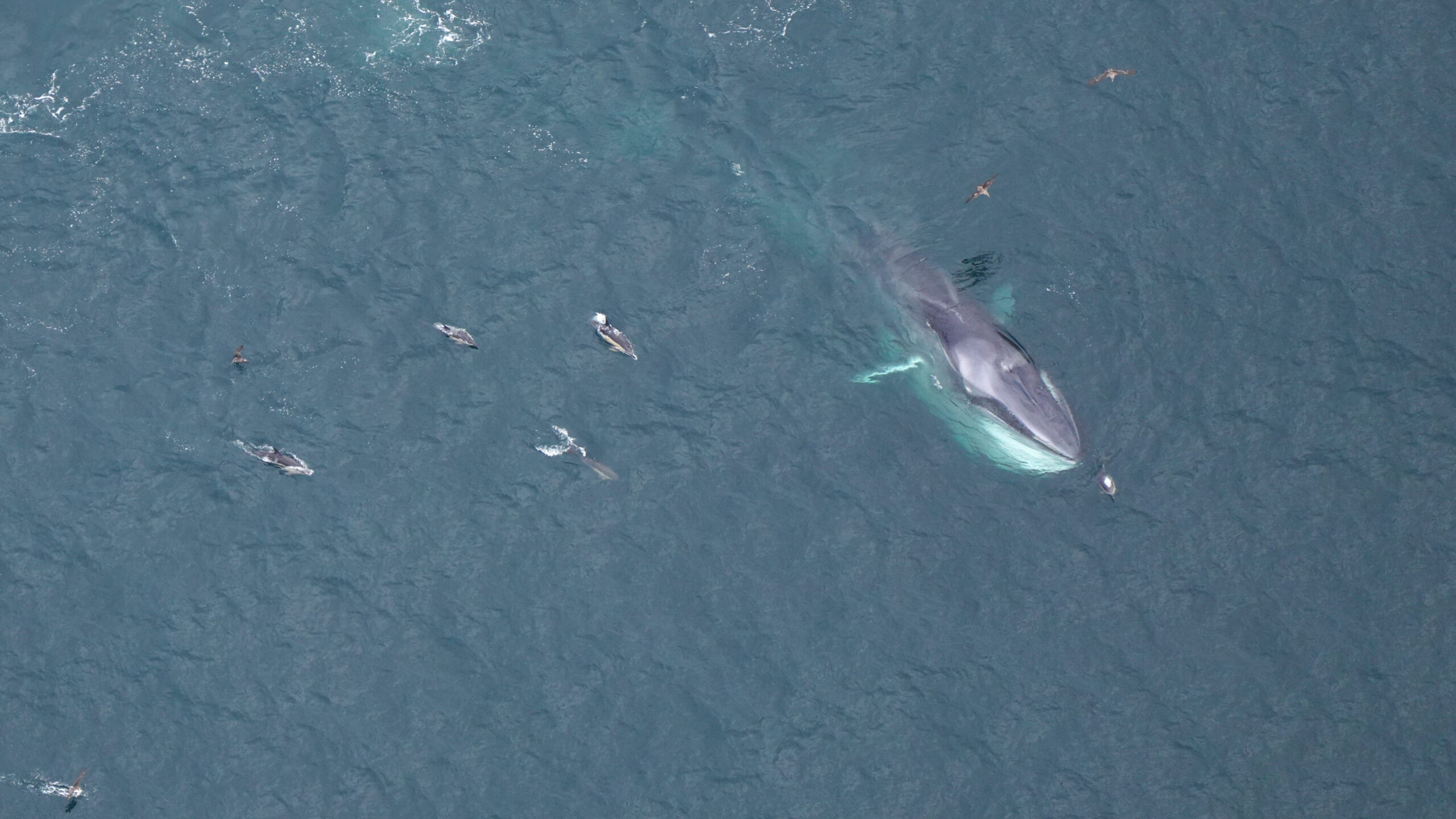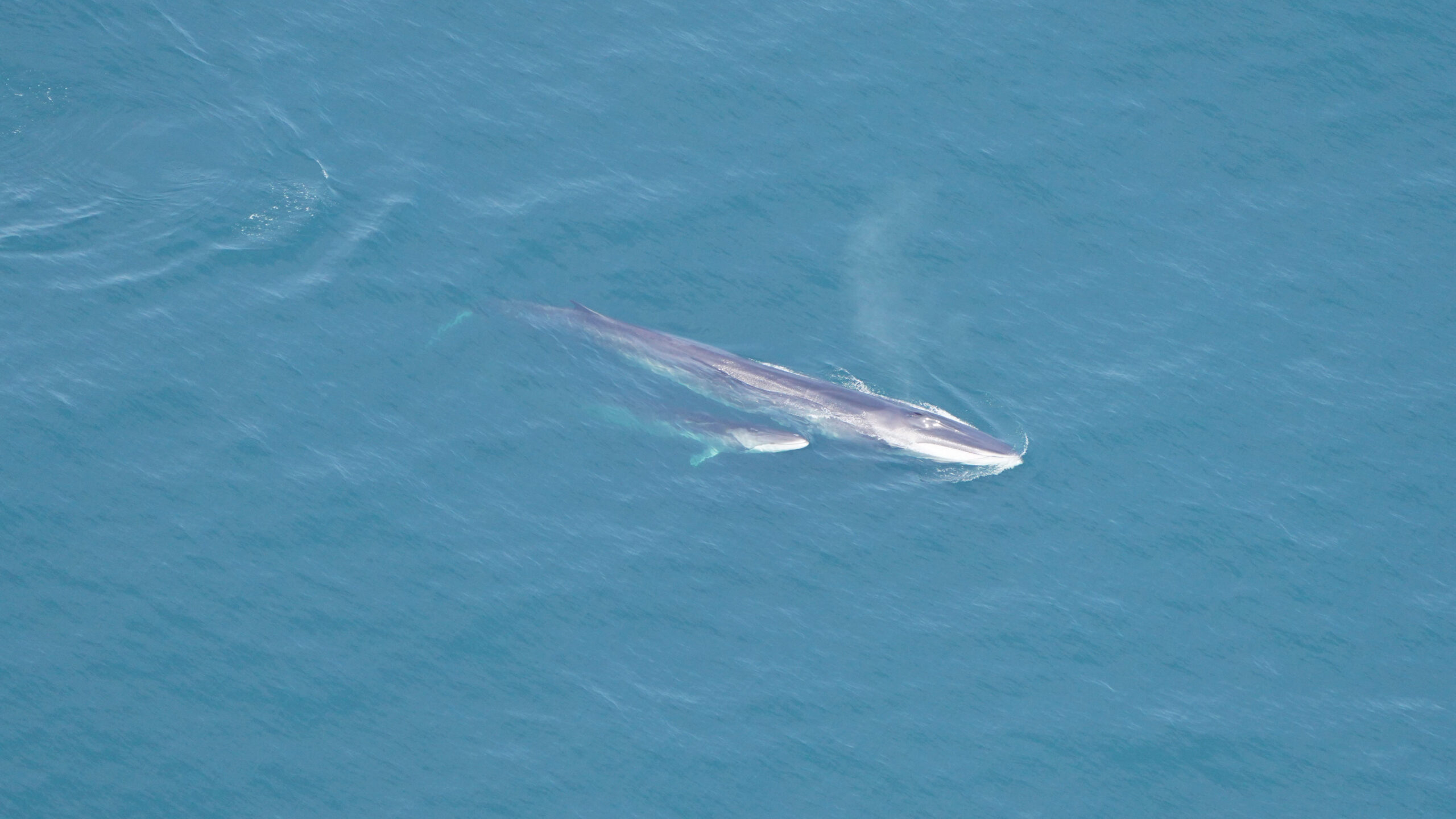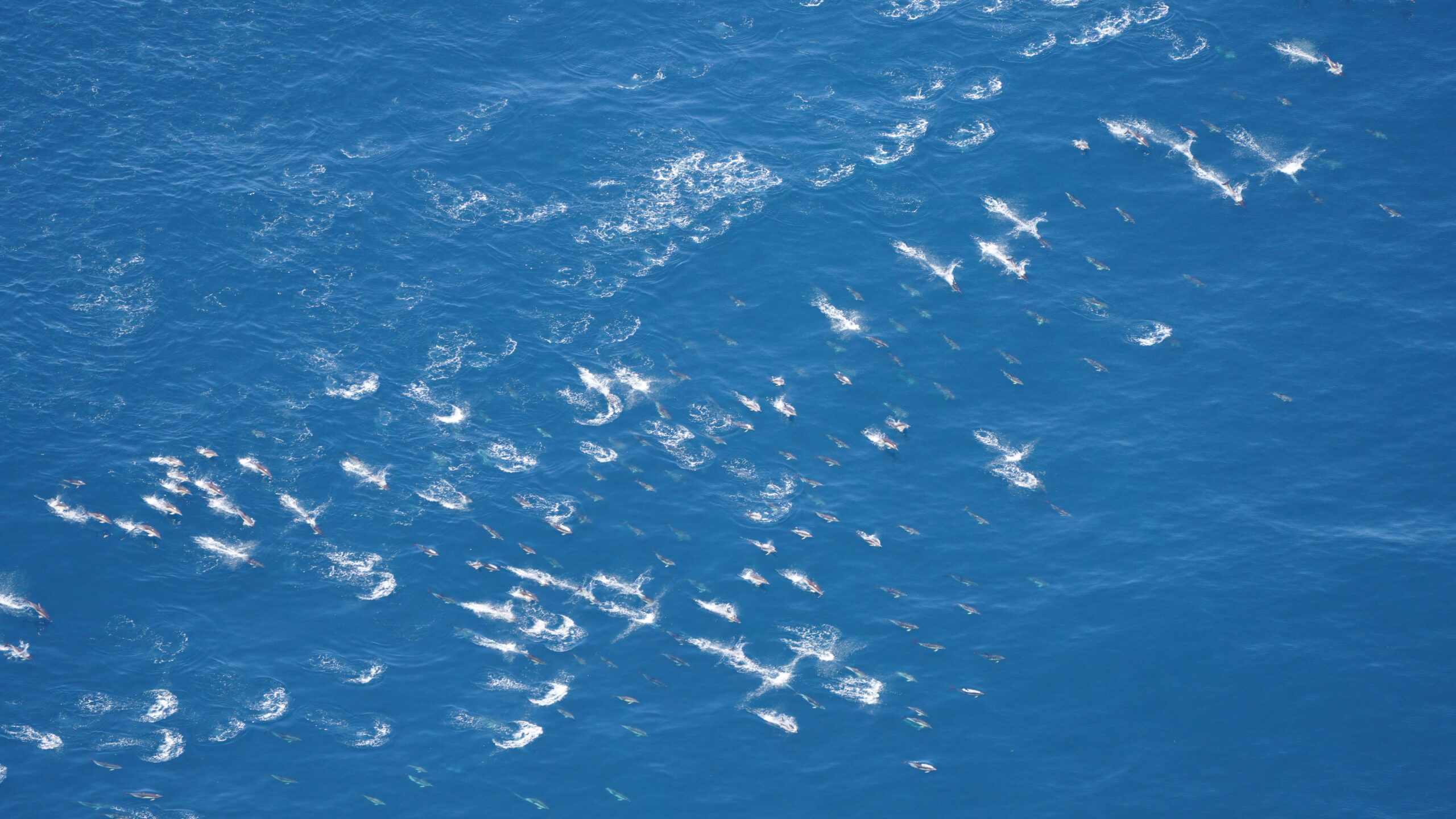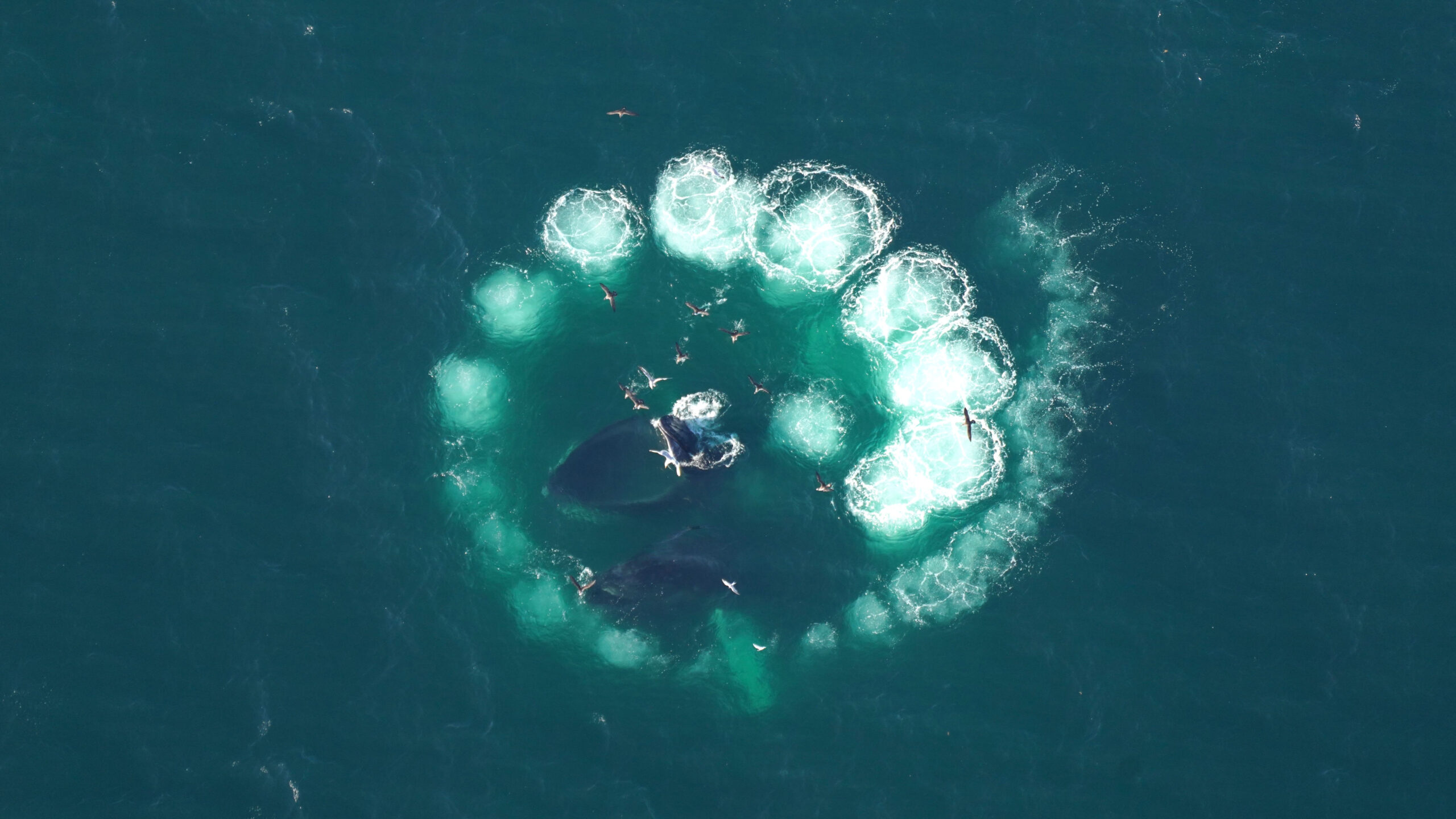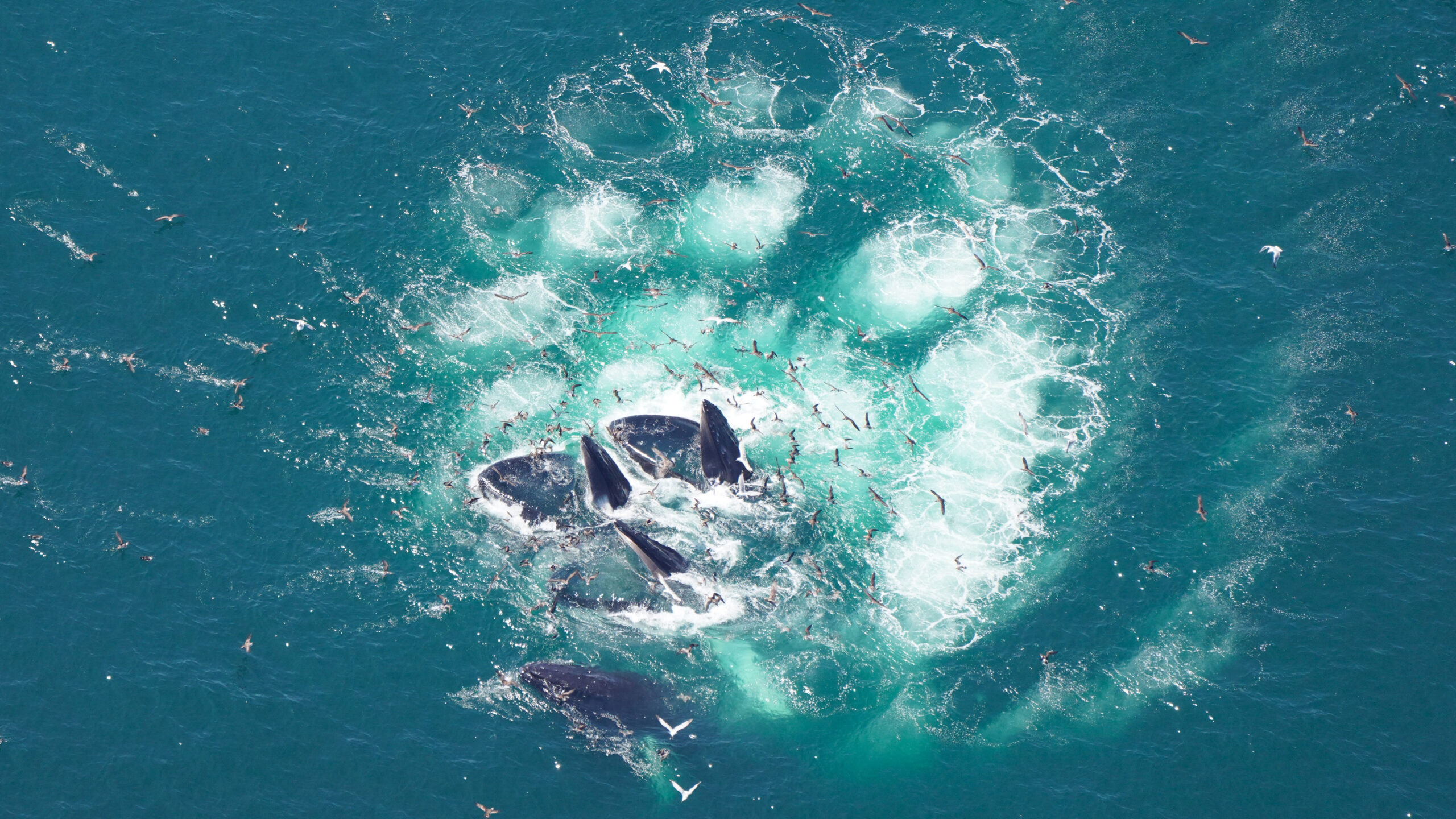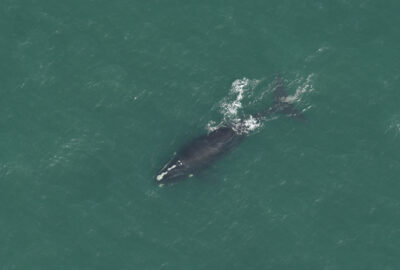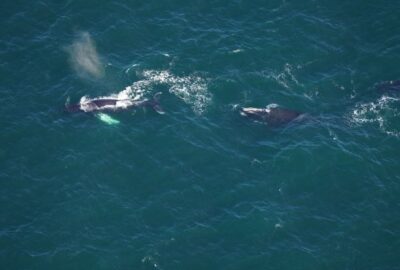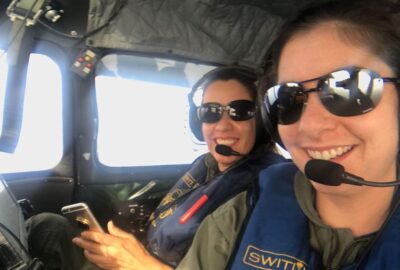Summer Aerial Survey Sightings
By New England Aquarium on Tuesday, August 29, 2023

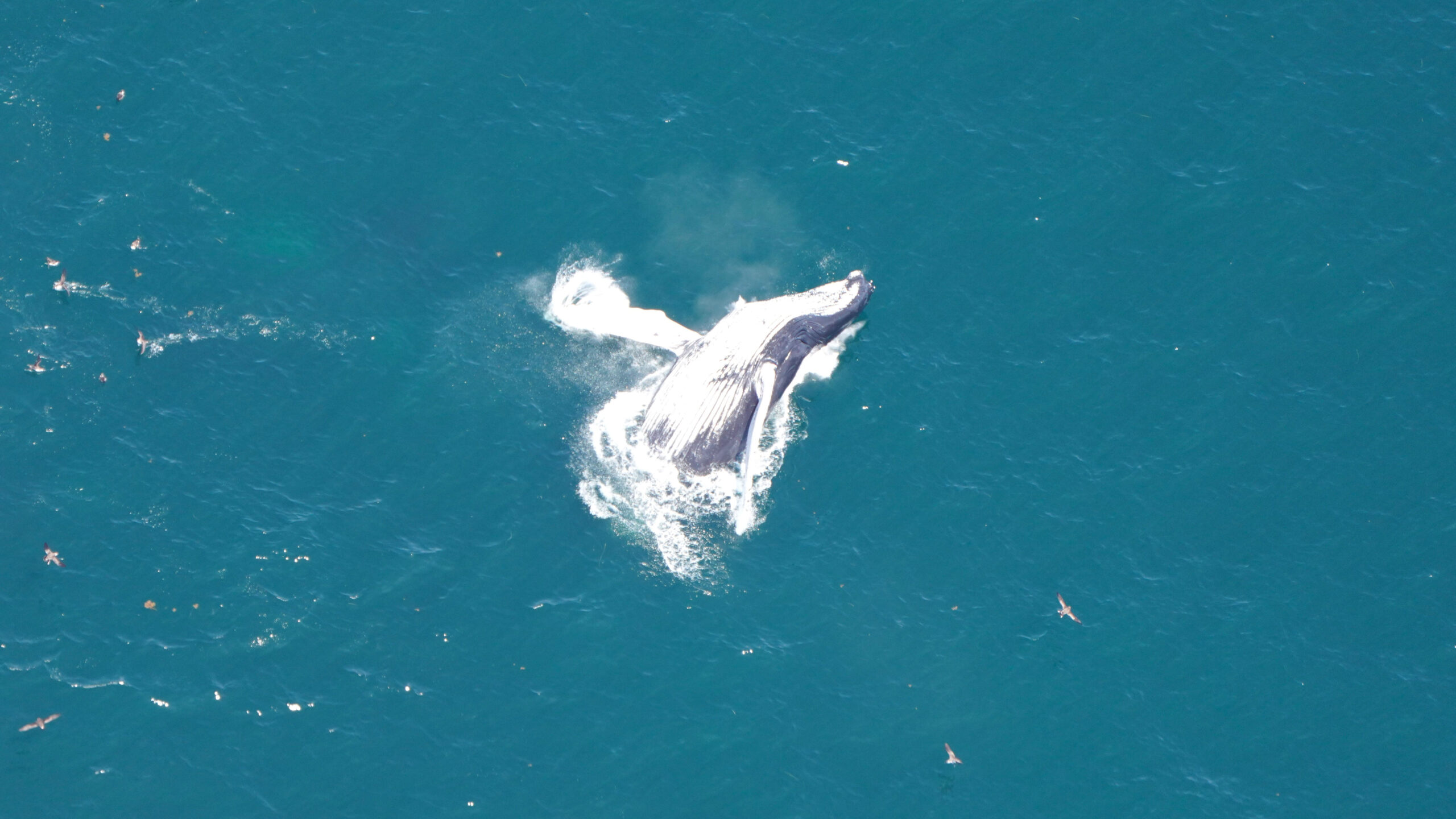
The New England Aquarium’s aerial survey team has been conducting systematic aerial surveys in southern New England since 2011. Our surveys collect valuable data on many marine species like whales, dolphins, sharks and sea turtles. This long-term data set contributes to developing wind energy sustainably by helping to monitor changes in populations, animal health, and trends in occurrence and habitat usage. Summer is one of our favorite seasons to fly because we see such a variety of whales and dolphins including large whales like fin, humpback, and minke whales, as well as common and bottlenose dolphins.
/
From June through August, our aerial survey team flew 13 surveys in southern New England, totaling 78.6 hours in the air. In total, we sighted 8,621 whales and dolphins this summer, some of which were likely sighted on multiple surveys. This total includes 254 fin whales (including two calves), 341 humpback whales (including 10 calves), 75 minke whales, 5,967 common dolphins, and 1,349 bottlenose dolphins!
/
We took 1,788 photos, documenting 5 groups of lunge-feeding fin whales and 56 groups of bubble-feeding humpback whales, as well as breaching whales, leaping dolphins, and flocks of birds all feeding among schools of tuna.
/
Humpback whales in southern New England are well-known for bubble-feeding – a technique in which they exhale a circular net of bubbles to corral their prey (small fish) inside. This allows the humpbacks to then swim up to the surface with their mouths open through the bubble-net and consume the concentrated prey caught within the circle of bubbles. This summer we were especially excited to see 56 instances of humpback whales feeding, which included 125 whales!
All photos taken by NEAq Aerial Observers. Photos taken on surveys of wind energy areas and surrounding waters sponsored by MassCEC and BOEM.

Related Stories
The Anderson Cabot Center for Ocean Life is the Aquarium’s dedicated research arm that uses marine science to protect animals and help others use the ocean responsibly.
